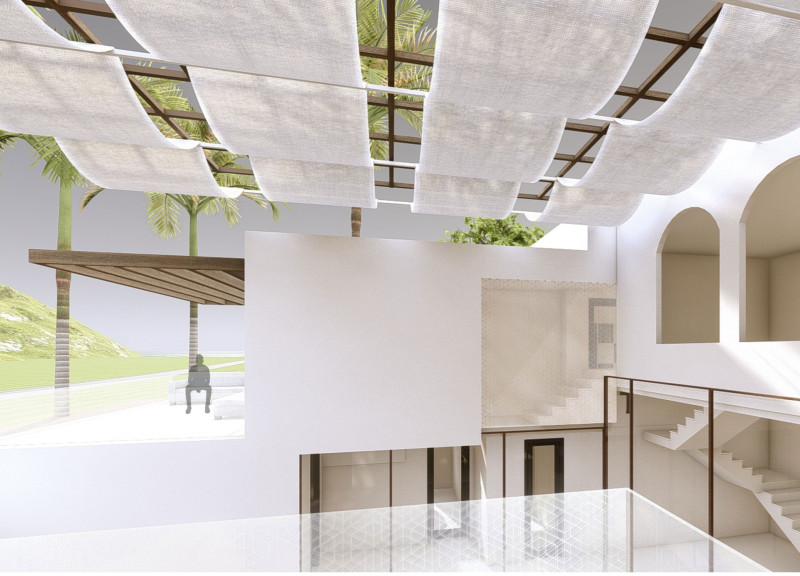5 key facts about this project
At its core, the project aims to foster a sense of community while providing seamless adaptability for various events and activities. This is reflected in the flexible floor plan that allows spaces to transform according to different requirements, making it suitable for gatherings, markets, and exhibitions. The architectural layout emphasizes connectivity, encouraging interaction among users, while still defining private areas for users seeking solitude.
The design approach is notable for its responsiveness to environmental conditions. Large windows facilitate natural light, promoting energy efficiency and enhancing the occupant’s experience. The strategic placement of overhangs minimizes solar gain during peak summer while maximizing warmth during winter months. This careful consideration of natural elements contributes to a comfortable indoor climate year-round.
When examining the material palette, a selection of sustainable and locally sourced materials stands out. The use of reclaimed wood brings warmth to the interior spaces while echoing the natural context of the surroundings. Complemented by steel and glass, the materials align with contemporary architectural trends while promoting durability and low maintenance. The incorporation of green roofs and vertical gardens not only enhances the aesthetic appeal but also improves air quality and biodiversity in the urban environment, aligning with eco-friendly design principles.
The façade of the building is particularly engaging, characterized by a harmonious blend of textures and colors that resonate with the localized architectural vernacular. The use of natural stone cladding interspersed with modern metals creates a dialogue between tradition and modernity. This thoughtful design approach ensures that the structure integrates well within its context, respecting the historical nuances of the area while pushing for a contemporary architectural expression.
Unique design elements also emerge in the building’s outdoor spaces, which are designed to be an extension of the internal environment. Outdoor seating areas, landscaped gardens, and pathways create an inviting atmosphere that encourages gathering and interaction among community members. The seamless transition between indoors and outdoors is a vital aspect of the design, promoting a sense of well-being and connection to nature.
Furthermore, the project's commitment to accessibility is evident throughout. Thoughtful design elements ensure that all spaces are navigable for individuals of varying mobility levels. This inclusivity underscores the project's overarching aim of fostering a sense of belonging and community engagement.
Overall, this architectural project exemplifies a well-rounded approach to modern design, addressing function, sustainability, and community needs without sacrificing aesthetics. Its unique blend of materials, responsive design, and commitment to fostering connection make it an exemplary case study in contemporary architecture. For readers interested in exploring the intricacies of this project further, including the architectural plans, architectural sections, and detailed architectural ideas, a visit to the project presentation will provide a comprehensive understanding of the design outcomes and principles at play.


























